“Sudeleagh”: the muddled, Anglo-Saxon word, loosely meaning south-lying pasture, that was originally bestowed upon a site in Winchcombe, Gloucester, would eventually evolve into the more eloquent and statelier name, Sudeley, when a motte and bailey castle was built upon the site in the fifteenth century.
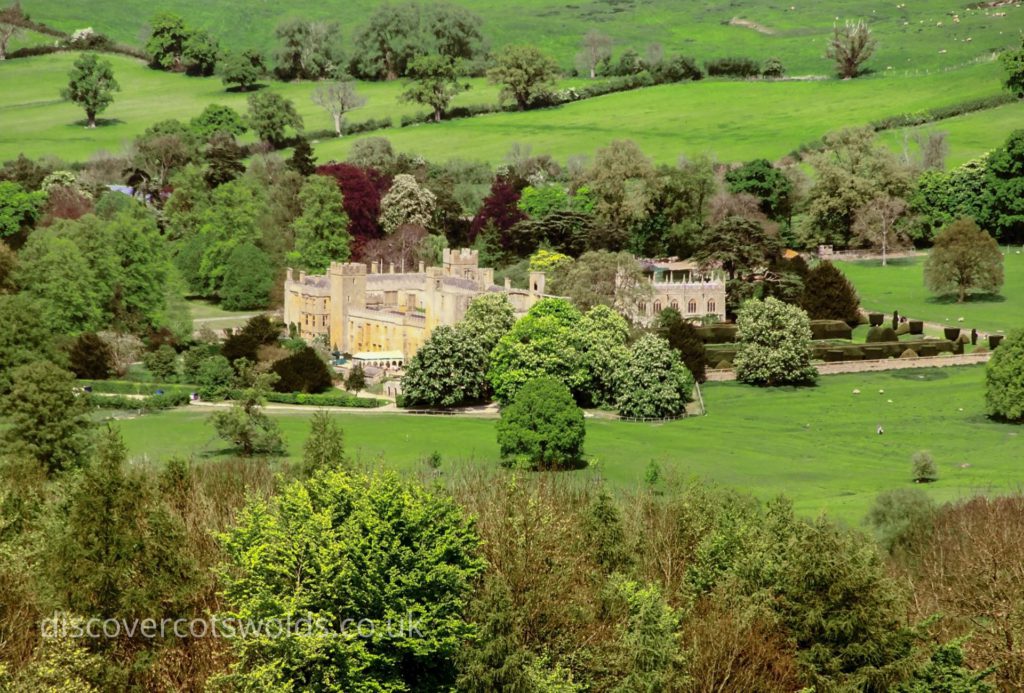
Sudeley Castle, which today sits within the majestic Cotswold hills, has been a veritable presence among the area’s rolling pastures for more than 700 years. It has played host to kings and queens, merchants and tenants; it has experienced restorations and modernisations, not to mention the inclusion of numerous gardens.
Visitors can explore the castle’s fascinating past, including the intimate 15th-century church where Katherine Parr, the last of Henry VIII’s six wives, lies entombed, as well as the castle rooms and exhibits containing treasures from ancient Roman times to the present day.
The history of Sudeley Castle
The humble and scattered beginnings of Sudeley Castle date back roughly to the 11th century when the building began as a manor house in Winchcombe which, at the time, was the capital of the Kingdom of Mercia during the reign of King Offa. This proximity to the ruling family is likely the start of Sudeley’s early designation as a royal estate.
Amid the 12th century’s major civil war, the Anarchy (1135 – 1153), it is generally believed that the first actual castle structure was built on Sudeley’s site––although the plans of which are unknown. This adulterine castle, constructed sometime between 1140 – 1144 and torn down several times before the first modern iteration, would be the framework for future versions of this fortification.
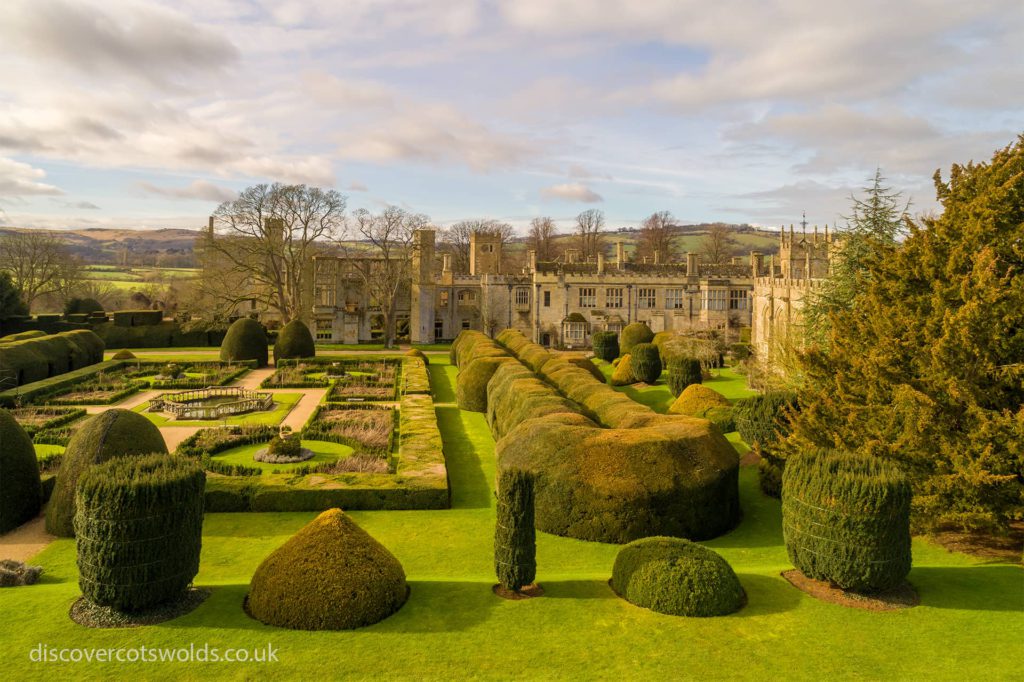
Ralph Boteler, 1st and 6th Baron of Sudeley, was a wealthy aristocrat who, climbing the ranks of the courts of King Henry V and Henry VI, is thought to have initiated the construction of the current Sudeley Castle in 1443, building the structure on a double courtyard plan: the outer area of which would house servants and soldiers, and the inner courts of which would be occupied by Ralph and his family. But this arrangement would not last for long.
In 1469, as a result of new allegiances, Ralph was forced to sell Sudeley Castle to the crown. King Edward IV granted the castle to his brother, Richard, Duke of Gloucester, who used it as a military base. In addition to military fortifications, Richard is also believed to have festooned Sudeley Castle with its large Banquet Hall (which now lies, in partial ruins, in the Ruins Garden). Following the death of Richard in 1485, Sudeley would transfer into the hands of the noble Tudor family.
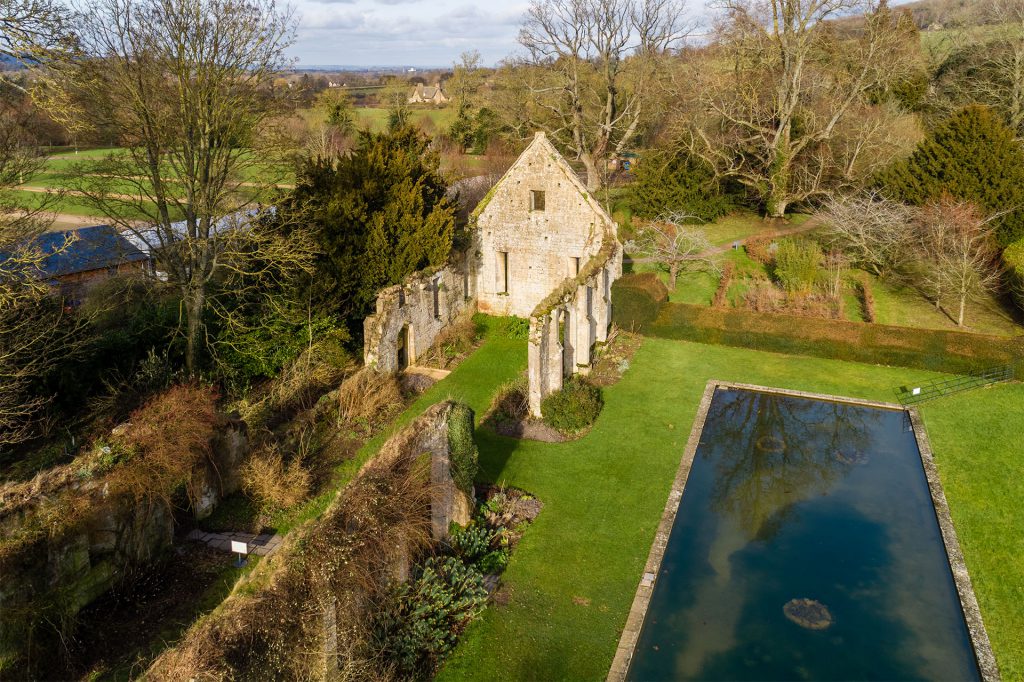
Following the death of King Henry VIII in 1547, Edward VI took the throne––much to the chagrin of his uncles, Edward Seymour, Lord Protector of England, and Thomas Seymour. Henry’s will made it possible for his executors to gift themselves with lands and titles, which is how Thomas became 1st Baron Seymour of Sudeley. He assumed control of Sudeley Castle and moved there with his new wife, the former Queen Katherine Parr––sixth and final wife of Henry VIII––in 1548, without the new king’s permission.
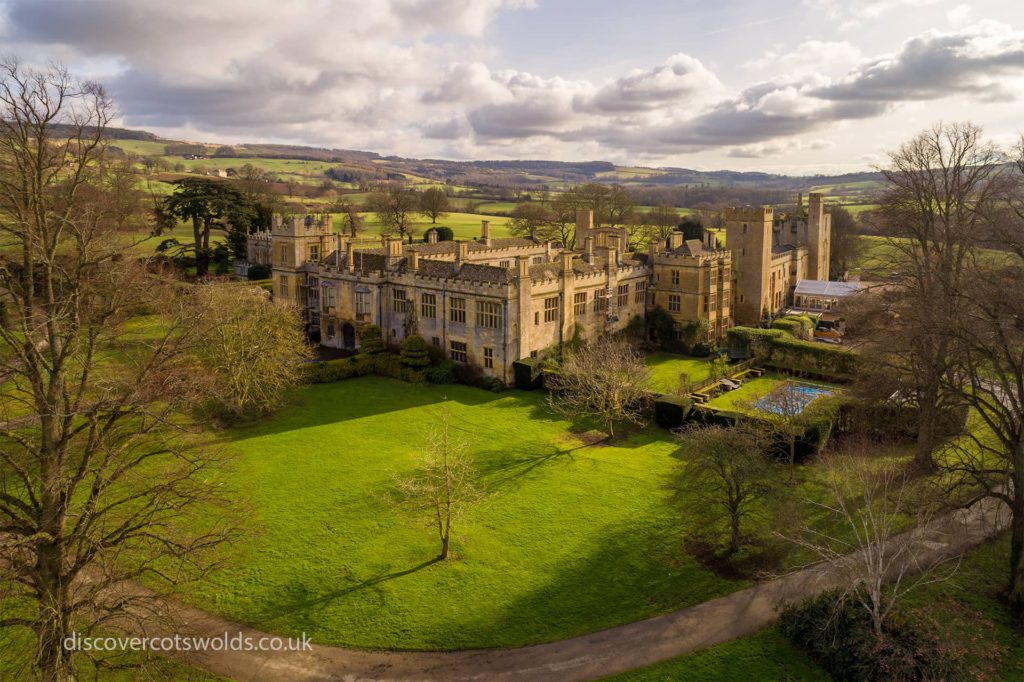
Katherine Parr made Sudeley Castle home for herself and her extensive entourage, which included Lady Jane Grey, her husband’s ward, who would eventually become the Nine Days’ Queen in 1553. Thomas spent an extensive amount of money on the Castle, outfitting it with wares and adornments suitable for royalty. But Katherine’s duration as the lady of the house was tragically short, dying five days after the birth of her daughter, Mary Seymour, in September of that same year.
Katherine was buried on the grounds of Sudeley, in St. Mary’s Church. Though her tomb would become lost over the centuries, it was rediscovered by new owners in 1782 and encased in a stone vault. Following the restoration of the chapel in 1863, Parr’s remains were interred in a neo-Gothic tomb, topped with a life-size marble effigy, where today, it remains a key attraction.
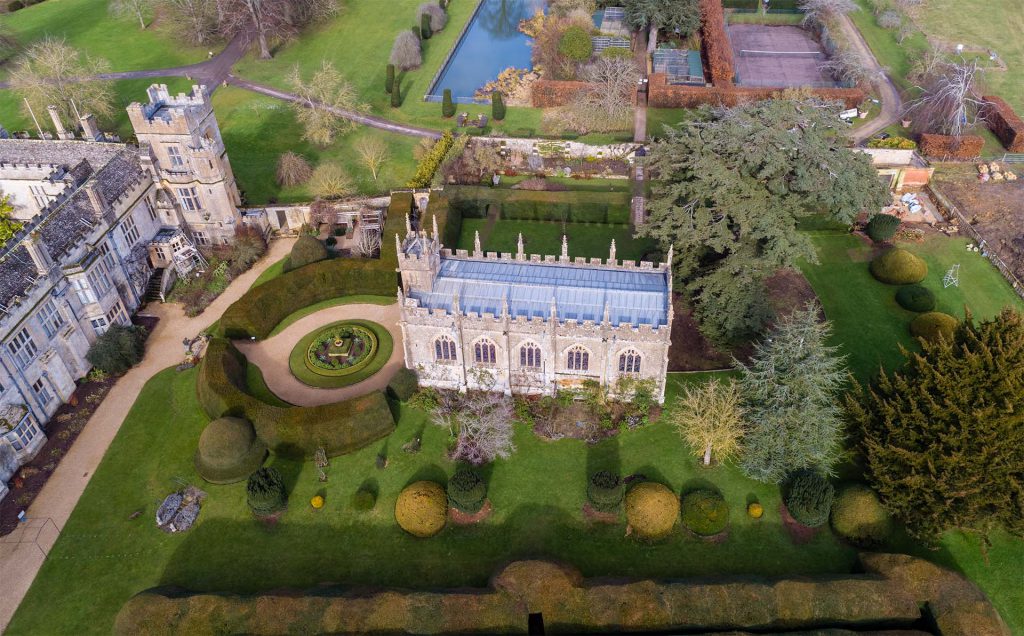
Thomas retained Sudeley Castle until his death six months later, at which time the property again ended up in the hands of the crown.
Sudeley Castle throughout the years
Sudeley Castle was used by King Charles I as a military base during the First English Civil War of 1642. While the fortress saw minimal battle during the strenuous period, it was eventually laid to siege the following year by an army of five hundred soldiers. Sudeley’s garrison fell and the castle was pillaged and, eventually, abandoned. In 1649, with the war still raging, parliament made a decree that Sudeley Castle could not be used as a military post and, as such, many of the interior rooms, as well as the inner courtyard, were dismantled.
By this point, Sudeley’s owner, Baron George Brydges, received financial support as a result of this parliamentary order––but it was not enough, and he died penniless in 1655. Sudeley Castle was subsequently inherited by his widow, Lady Jane Savage, who, like her husband, did not have the means to restore such a massive fortification. As a result, the Castle lay derelict and was left to ruins for close to 200 years.

But all hope was not lost. In the 18th century, Sudeley Castle experienced a sort of renaissance. While not yet refortified to its former days of glory, it resumed hosting duties for many important figures of the time, thanks in part to its new owners. Descendants of Lady Savage, the Pitt Family, assumed control of Sudeley and began renting the building out to tenants––notably, the Lucas Family, comprised of many members of the local gentry. The patriarch, Joseph Lucas, not only welcomed King George III to the castle’s interior halls, but the Lucas family housekeeper famously saved the His Majesty’s life, catching him after he fell from the Octagon Tower during a fire.
The Dents of Worcester
Despite its decrepit state (and despite its tenancy period wherein various owners lived among the crumbling state, one even turning the massive structure into a pub before selling off much of the building’s timber and stone), Sudeley Castle was still a historical marker and appealed greatly to wealthy members of industry. Case in point, it was purchase by brothers John and William Dent of Worcester in 1837, two successful garment manufacturers, who immediately set about restoring most of the site, while purposefully leaving some of the picturesque ruins intact to bolster the castle’s romantic character––the results of which can still be seen today.
Inside, the Dents swathed the apartments and staterooms with acquired artwork and antiques. When the castle changed hands again in 1855 following both brothers’ deaths, nephew John Croucher Dent assumed control with the same ethos of romanticising the palace, much of which was spearheaded by his wife, Emma, a descendant of a wealthy silk manufacturing family. Under Emma’s decorous eye, costume balls and soirees were hosted at Sudeley Castle, and hosting duties were maintained for much of her tenure, earning the property a renewed reputation as a proper grand castle.
But Emma was not satisfied: by 1859, she had set her sights on something grander. She undertook a modernisation project that would see enlarged square footage, extensive remodelling, including a new tower, and, most significantly, the building’s first piped water supply.
By 1900, Sudeley Castle was again passed down to members of the Dent Family, this time to Henry Dent-Brocklehurst who, fortunately, maintained (along with his earlier ancestors) a hearty, romanticised view of the property’s future, further adding rare artwork to the interior galleries, resulting in an impressive fine art collection. So impressive that during the early years of World War II, many of the paintings at London’s Tate Gallery were moved out of the city up to Sudeley to protect them during the falling bombs of the Blitz.
Mark Dent-Brocklehurst inherited Sudeley Castle in 1969 following the death of his father, while his mother, Mary, continued to live in residence. It was this year that Sudeley was first opened to the public as a tourist attraction. Elizabeth Dent-Brocklehurst married Lord Ashcombe, becoming Lady Ashcombe, in the early 1980s, and the two began another refurbishment plan to solidify the delicate balance between private home and public site.
Today, Lady Ashcombe and her children manage Sudeley Castle and all the surrounding grounds.
Sudeley Castle’s award winning Gardens
As one can imagine, with a property as vast and stately as Sudeley Castle, a traditional English garden certainly must feature prominently within the grounds. As luck would have it, Sudeley Castle boasts ten––TEN–– award winning gardens, covering approximately 15 acres and offering wonderful sweeps around the magnificent, 1200-acre estate.
All of the gardens are open to the public, some without an admission fee. These gardens at Sudeley Castle include the renowned Queens Garden, where four of England’s queens once walked.
The Queens’ Garden
The masterful and central garden of Sudeley’s grounds is named after four of England’s Queen’s: Anne Boleyn, Lady Jane Grey, Elizabeth I and Katherine Parr––all of whom have a special connection to the castle.
The Knot Garden
This tranquil, sheltered space consists of hundreds of box hedges laid out in a unique pattern based on a dress worn by Elizabeth I––the painting of which hangs inside the Castle.
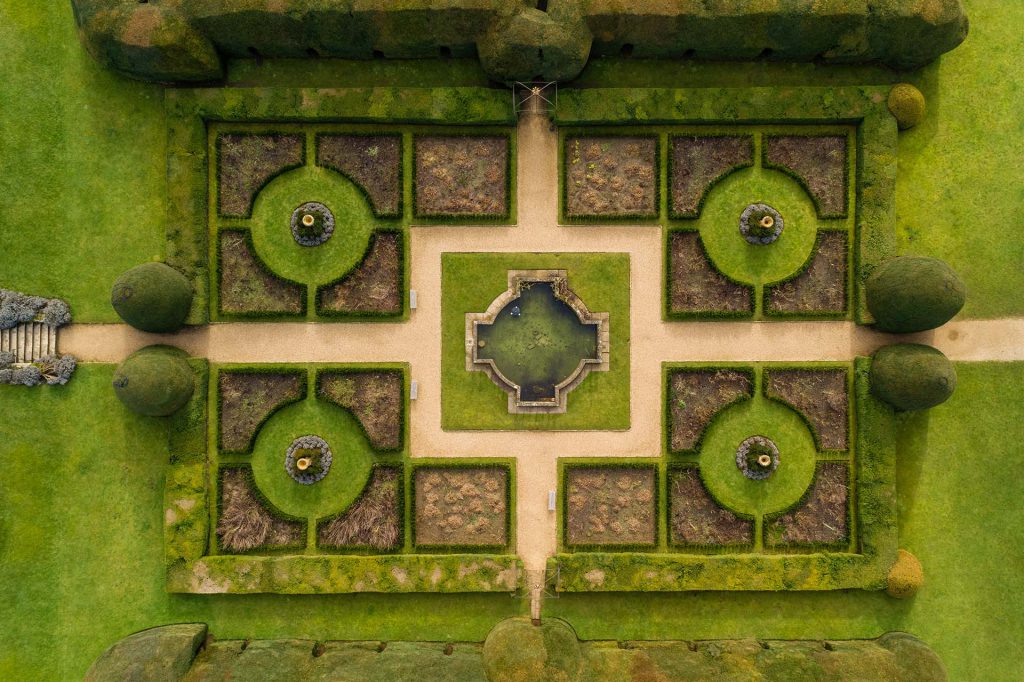
The Herb Garden
One of the newest additions to the Sudeley Castle grounds, the Herb Garden consists of six unique garden bed, each of which yields various types of cooking and therapeutic herbs. It’s a quiet and contemplative space, so much so that a plant-like creation in the shape of a human figure is perched solemnly on the garden’s bench, reading a book while wearing a big, floppy hat.
The Ruins Garden
Another early victim of Cromwell’s Civil War destruction, the aptly named Ruins Garden is backed by the original walls of the Sudeley Castle’s Banqueting Hall. Expertly curated, this garden is a sombre and understated area of the grounds that offers viewers a glimpse of what a thriving green space, complete with climbing ivies and golden roses, might have looked like back in the 1500s.
The Mulberry Garden
Anchored around an ancient mulberry tree first planted by one of the Castle’s pre-Victorian doyennes, Emma Dent, in the early 19th century, the Mulberry Garden is typically teeming with lush greenery. But its significance lies, unsurprisingly, around the mulberry leaves, which are the only source of food for silkworms––silk being the primary manufacturing output of Emma’s industrious family.
The White Garden
The White Garden is located outside St. Mary’s Church, and consists of countless varieties of white flowers––a symbol of the everlasting purity of Queen Katherine Parr, whose body lies within the chapel––surrounding the building exteriors. Not only is the White Garden an emblematic tribute to Sudeley Castle’s most famous resident, but it is also believed to be the site wherein Lady Jane Grey would enter into the church for daily prayers.
The Tudor Physic Garden
Before the advent of modern medicine, tinctures and remedies were concocted using the plants from these grounds––the Tudor Physic Garden. Visitors to the estate today can stroll this quiet area, recreating the same steps undoubtedly taken by Katherine Parr during her time at Sudeley.
The East Garden
Inspired by Andrew Marvell’s romantic poem, “The Garden”, this quaint area of the grounds offers a unique canvas for contemplative strolls and mindful reflection.
The Secret Garden
Named after its secluded layout, the Secret Garden was re-planted in 1979 by current Sudeley chatelaine, Lady Elizabeth to commemorate her marriage to husband Lord Ashcombe. It features an ever-changing line-up of horticultural wonders and brims with thousands of tulips each year.
The Tithe Barn Garden
The Tithe Barn centred around this effusive greenery spot back to the early 15th century, where it was partially destroyed by Oliver Cromwell during the Civil War. Miraculously, the structure has been restored and the Tithe Barn Garden is now a colourful area teeming with flora, accented by a serene koi carp pond.
St. Mary’s Church
As you will come to discover, Sudeley Castle is not only one of the most spectacular established sites in England, but it is also the only private castle in the country to have a queen buried within the grounds.
Katherine Parr, the last of Henry VIII’s six wives and final queen consort of the House of Tudor, has lain in St. Mary’s Church since her death in 1548.
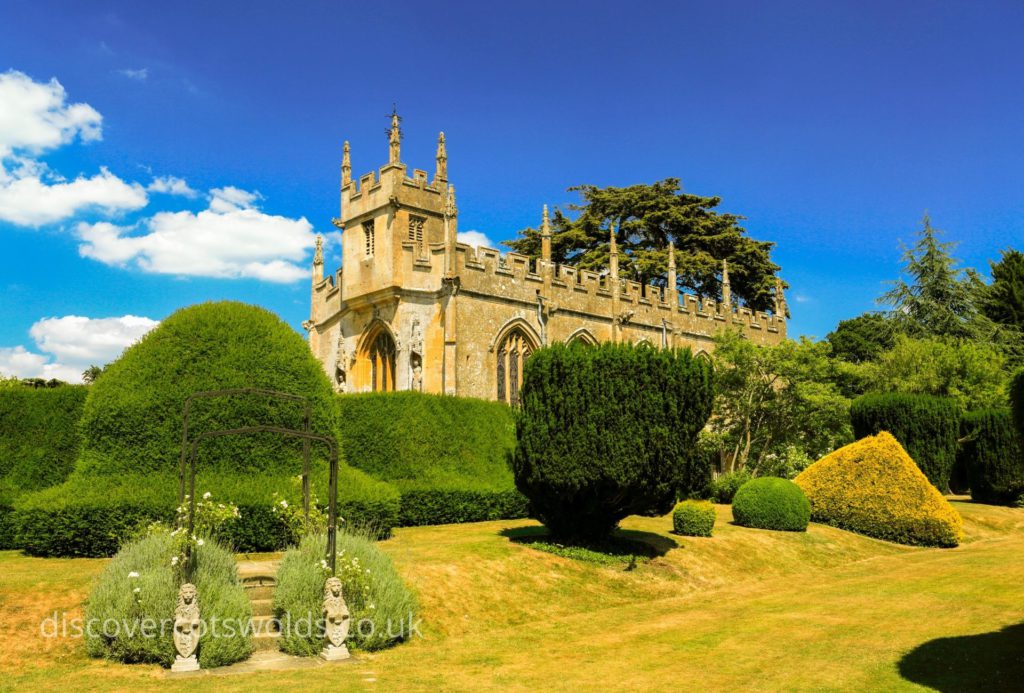
Today, St. Mary’s Church, nestled on the grounds of the Castle, is a Grade I listed property and its founding date is attributed to c. 1460, with a restoration event, marked as 1859 – 1863, completed by Sir G.G. Scott (when the property would still have been in the hands of the Dent family).
Sudeley Castle today
There are ample opportunities for a fun and engaging historical tour through Sudeley Castle and gardens whatever you’re looking for: a quiet family holiday, an informative school trip, an engaging work retreat, or a romantic getaway for love struck couples. There is nothing like the romantic scenery and climactic backdrop of this historic fortification to inspire, educate and entertain. For an exclusive experience, consider the ‘behind the castle walls’ tours, which provide access to the family’s private apartments.
Hoping to catch a few sights, or to stroll through the lush greenery for a contemplative afternoon? Day passes are readily available for solo guests––and best of all, a range of light treats and snacks await at the on-site Castle Kitchen Pantry (no admission fee required).
Or, for those with a more ample appetite, grab a table at the Terrace Café for hot and cold lunch options (including sausage rolls, breakfast baps, soup, quiche, jacket potatoes, finger sandwiches, cakes and tea). Children will love the famed Adventure Playground, featuring a wooden fort, zip wire, and an assault course.
Better yet, make a weekend out of any visit by checking into any of the onsite cottages, available to rent year-round, located along the edge of the Sudeley estate. Each cottage suite offers premier accommodations, featuring a unique backdrop for your Cotswold getaway.
Stay in the Emma Dent Cottage, the Almsbury Farmhouse or the Queen Mary’s Cottage––all of which are individually restored and featured modern conveniences with a touch of romantic and historic classicalism. Make lasting memories of your own: stay for a weekend, and extended week, or hire the venue for your wedding party. All cottage bookings include free admission to the Castle.
Sudeley Castle opening times are Daily from approx 12 April until 31 October. To reach Sudeley Castle from Cheltenham town centre, follow the A40 and B4632 roads, which will lead you directly to the castle grounds.
